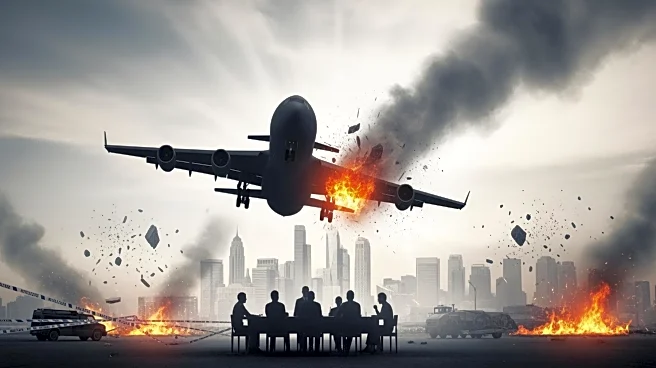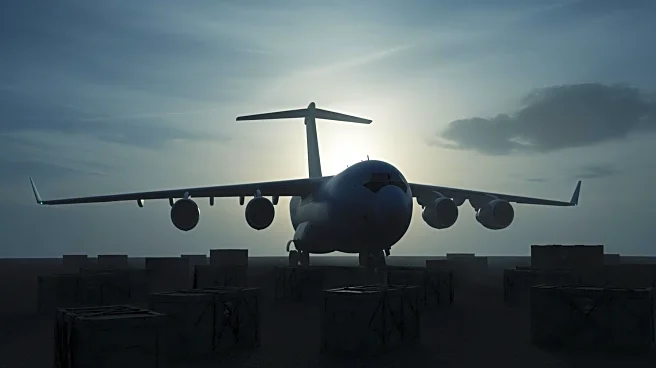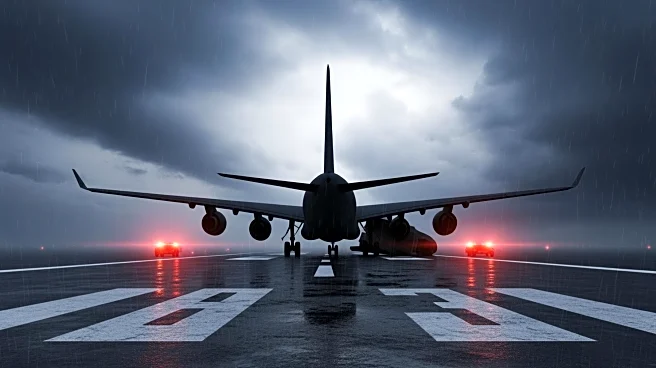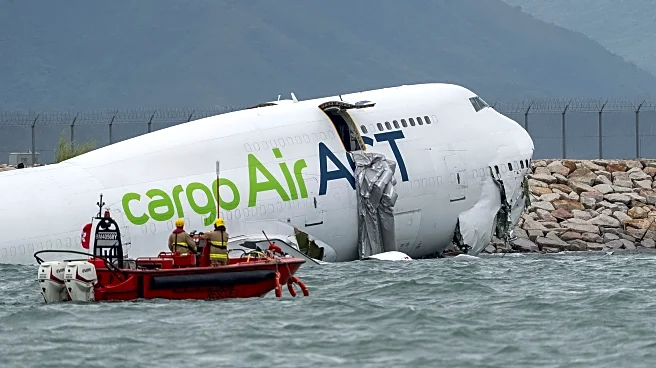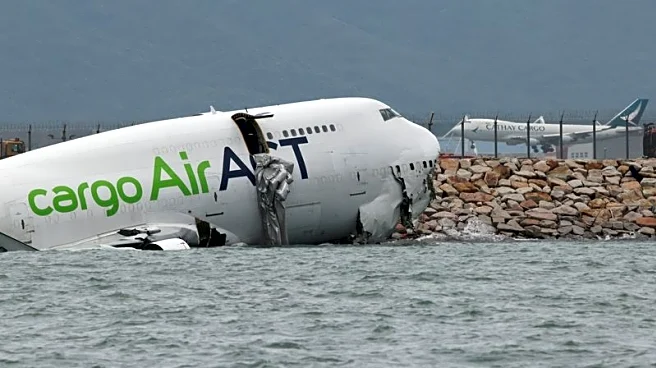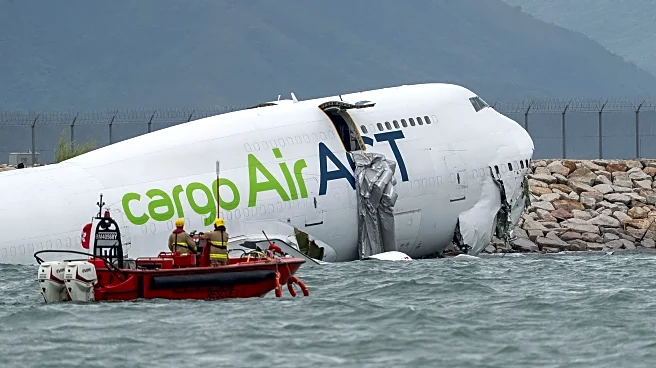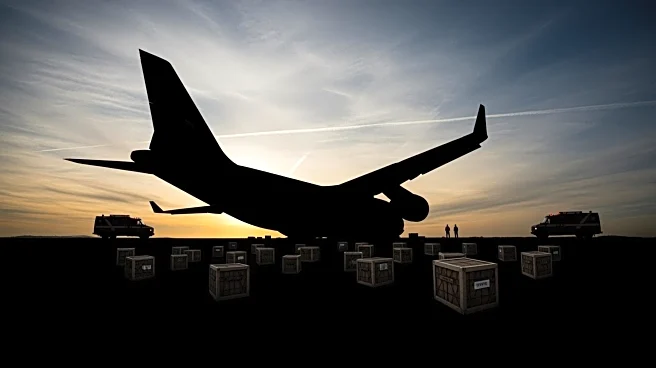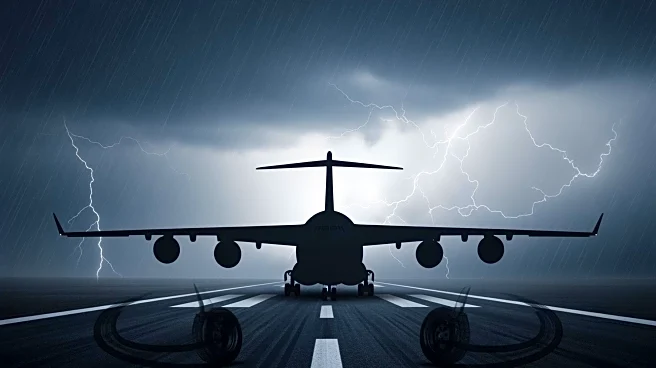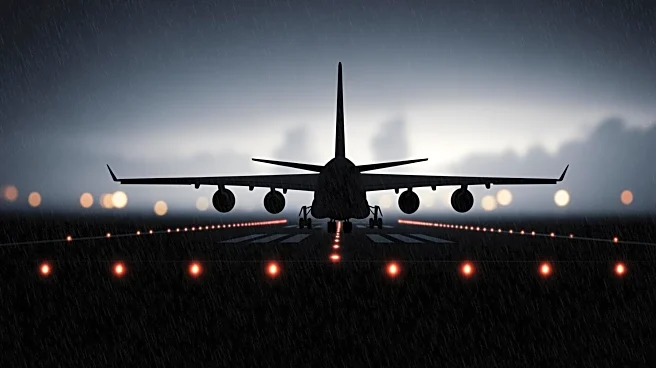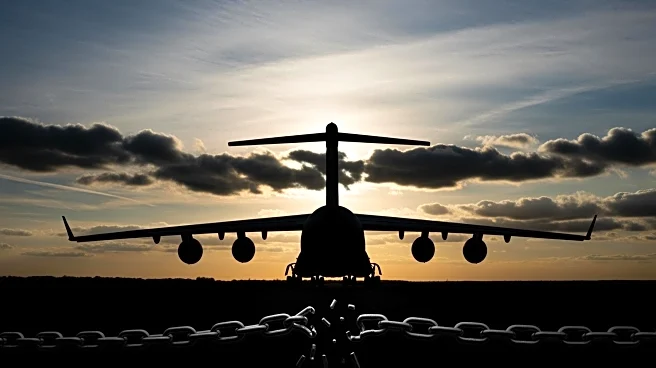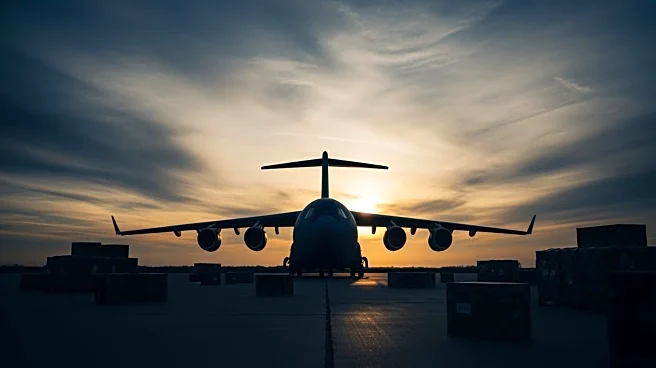What's Happening?
A cargo plane operated by Turkish freight carrier ACT Airlines on behalf of Emirates skidded off the runway at Hong Kong International Airport, resulting in the deaths of two airport security staff. The
incident occurred early Monday morning when the Boeing 747 veered off its intended path after landing on runway 07L, colliding with a security patrol vehicle and pushing it into the sea. The plane itself became partially submerged, but all four crew members on board escaped unharmed. The accident is under investigation, with authorities examining weather conditions, runway status, and potential technical issues.
Why It's Important?
This tragic event marks the deadliest airport incident in Hong Kong in over 25 years, highlighting potential vulnerabilities in airport safety protocols. The crash underscores the importance of rigorous safety measures and emergency response strategies at major international airports. The incident may prompt reviews of runway safety procedures and aircraft handling protocols, impacting airport operations and safety standards globally. The loss of life also brings attention to the risks faced by airport personnel, emphasizing the need for enhanced protective measures for ground staff.
What's Next?
Investigations are ongoing to determine the exact cause of the crash, with the Hong Kong Air Accident Investigation Authority leading the efforts. The northern runway, where the incident occurred, will remain closed until safety inspections are completed, although other runways continue to operate normally. The airport authority has pledged support to the families of the deceased workers, and further findings from the investigation may lead to changes in airport safety regulations and operational procedures.
Beyond the Headlines
The incident raises questions about the safety of older aircraft, as the Boeing 747 involved was 32 years old and had been converted from a passenger plane to a freighter. This may lead to discussions on the lifecycle and maintenance standards of aging aircraft, potentially influencing regulatory policies on aircraft conversions and operational limits.
